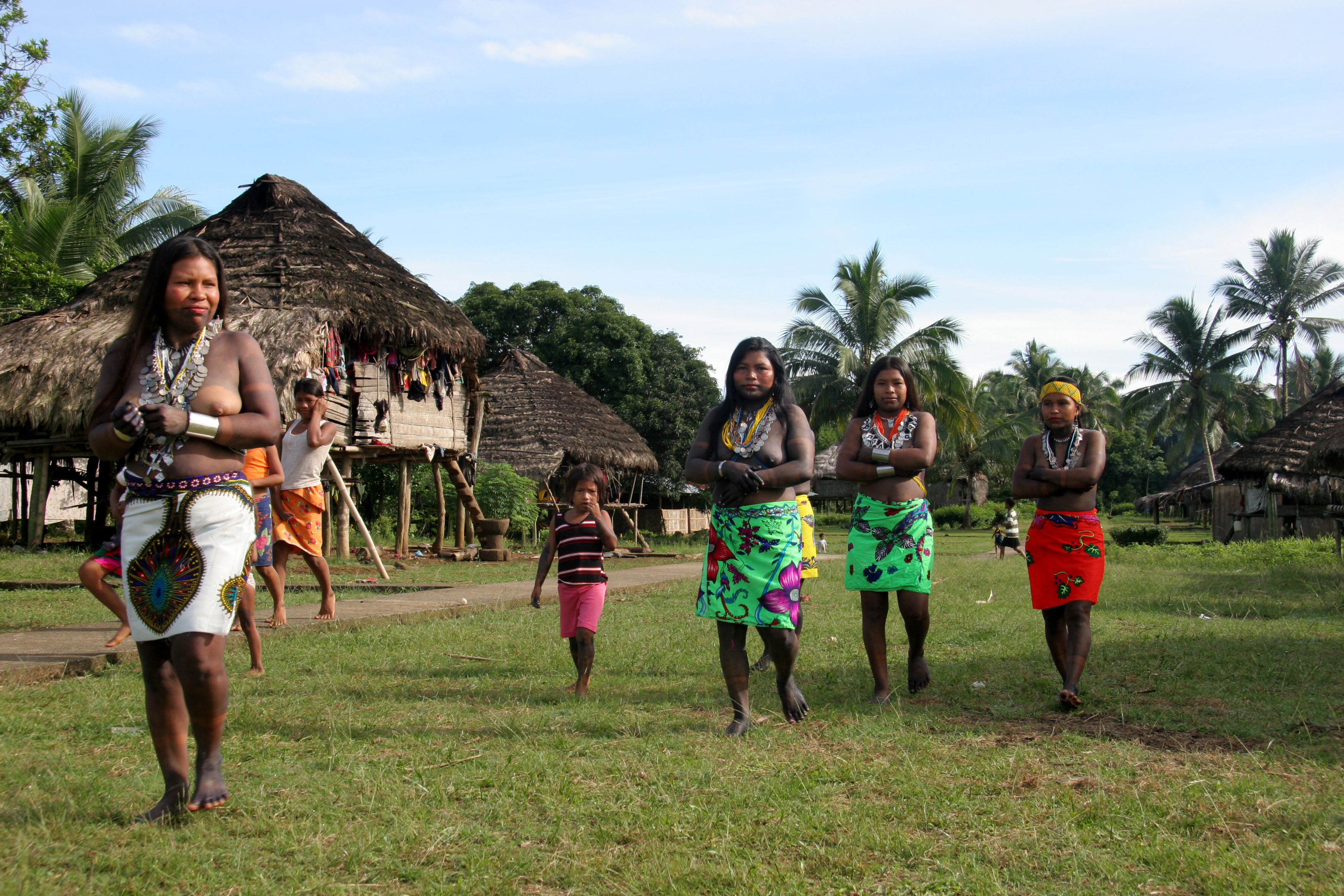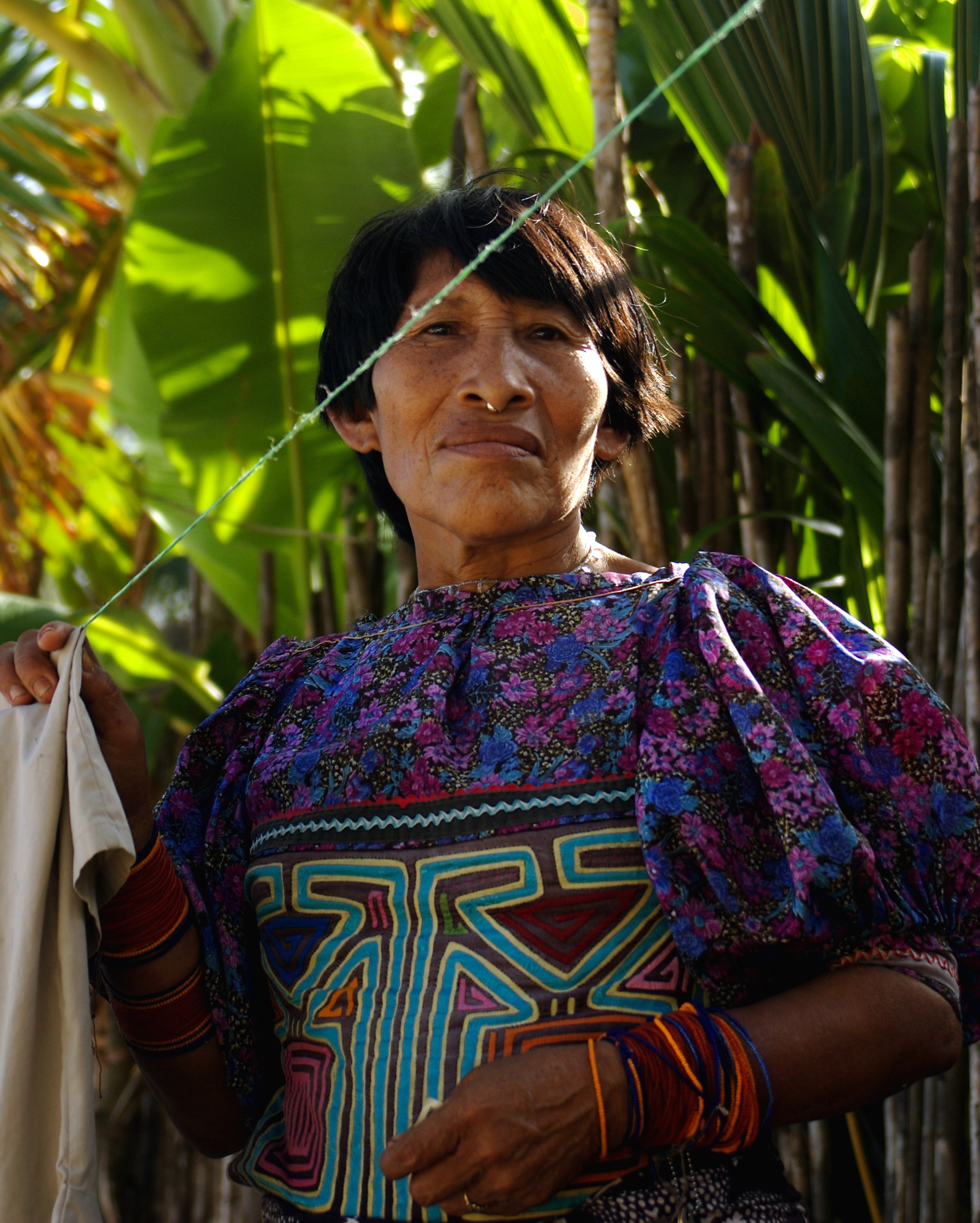|
Indigenous Peoples Of Panama
Indigenous peoples of Panama, or Native Panamanians, are the native peoples of Panama. According to the 2010 census, they make up 12.3% of the overall population of 3.4 million, or just over 418,000 people. The Ngäbe and Buglé comprise half of the indigenous peoples of Panama."Panama History: Indigenous People." ''Panama Experts.'' (retrieved 23 Feb 2011) Many of the Indigenous Peoples live on ''s'',"Indigenous Peoples in Panama." ''International Work Group for Indian Affairs.'' (retrieved 23 Feb 2011) which are administr ... [...More Info...] [...Related Items...] OR: [Wikipedia] [Google] [Baidu] |
Panama Embera0604
Panama ( , ; es, link=no, Panamá ), officially the Republic of Panama ( es, República de Panamá), is a transcontinental country spanning the southern part of North America and the northern part of South America. It is bordered by Costa Rica to the west, Colombia to the southeast, the Caribbean Sea to the north, and the Pacific Ocean to the south. Its capital and largest city is Panama City, whose metropolitan area is home to nearly half the country's million people. Panama was inhabited by indigenous tribes before Spanish colonists arrived in the 16th century. It broke away from Spain in 1821 and joined the Republic of Gran Colombia, a union of Nueva Granada, Ecuador, and Venezuela. After Gran Colombia dissolved in 1831, Panama and Nueva Granada eventually became the Republic of Colombia. With the backing of the United States, Panama seceded from Colombia in 1903, allowing the construction of the Panama Canal to be completed by the United States Army Corps of Engine ... [...More Info...] [...Related Items...] OR: [Wikipedia] [Google] [Baidu] |
Darién Province
Darién (, , ) is a province in Panama whose capital city is La Palma. With an area of , it is located at the eastern end of the country and bordered to the north by the province of Panamá and the region of Kuna Yala. To the south, it is bordered by the Pacific Ocean and Colombia. To the east, it borders Colombia; to the west, it borders the Pacific Ocean and the province of Panama. The area surrounding the border with Colombia is known as the Darién Gap, a large swath of undeveloped swampland and forest. With no roads, it is the missing link of the Pan-American Highway. Place names The name originates from the language spoken by the Cueva, an Indigenous tribe destroyed by the white European conquistadors during the 16th century. The Tanela River, which flows toward Atrato, was Hispanicized to Darién; the region and its communities took the same name. Santa María la Antigua del Darién, the first city founded in Tierra Firme, also took its name from the river. Subsequentl ... [...More Info...] [...Related Items...] OR: [Wikipedia] [Google] [Baidu] |
Bokota Language .
Buglere, also known as Bugle, Murire and Muoy, is a Chibchan language of Panama closely related to Guaymi. There are two dialects, Sabanero and Bokotá (Bogota), spoken by the Bokota people The Bokota, also called Bogotá or Bugleres, are an indigenous people of Panama. They live in Bocas del Toro and north of Veraguas. References Chibchan languages {{na-lang-stub ...[...More Info...] [...Related Items...] OR: [Wikipedia] [Google] [Baidu] |
Indigenous Languages Of The Americas
Over a thousand indigenous languages are spoken by the Indigenous peoples of the Americas. These languages cannot all be demonstrated to be related to each other and are classified into a hundred or so language families (including a large number of language isolates), as well as a number of extinct languages that are unclassified because of a lack of data. Many proposals have been made to relate some or all of these languages to each other, with varying degrees of success. The most notorious is Joseph Greenberg's Amerind hypothesis, which however nearly all specialists reject because of severe methodological flaws; spurious data; and a failure to distinguish cognation, contact, and coincidence. Nonetheless, there are indications that some of the recognized families are related to each other, such as widespread similarities in pronouns (e.g., ''n''/''m'' is a common pattern for 'I'/'you' across western North America, and ''ch''/''k''/''t'' for 'I'/'you'/'we' is similarly found ... [...More Info...] [...Related Items...] OR: [Wikipedia] [Google] [Baidu] |
Spanish Language
Spanish ( or , Castilian) is a Romance languages, Romance language of the Indo-European language family that evolved from colloquial Latin spoken on the Iberian peninsula. Today, it is a world language, global language with more than 500 million native speakers, mainly in the Americas and Spain. Spanish is the official language of List of countries where Spanish is an official language, 20 countries. It is the world's list of languages by number of native speakers, second-most spoken native language after Mandarin Chinese; the world's list of languages by total number of speakers, fourth-most spoken language overall after English language, English, Mandarin Chinese, and Hindustani language, Hindustani (Hindi-Urdu); and the world's most widely spoken Romance languages, Romance language. The largest population of native speakers is in Mexico. Spanish is part of the Iberian Romance languages, Ibero-Romance group of languages, which evolved from several dialects of Vulgar Latin in I ... [...More Info...] [...Related Items...] OR: [Wikipedia] [Google] [Baidu] |
Wounaan People
The Embera–Wounaan are a semi-nomadic indigenous people in Panama living in Darién Province on the shores of the Chucunaque, Sambú, Tuira Rivers and its waterways. The Embera-Wounaan were formerly and widely known by the name Chocó, and they speak the Embera and Wounaan languages, part of the Choco language family. Name The name ''Embera'' means "people". Collectively they are known as the Chocó and belong to two major groups: the Emberá, of upper Atrato and San Juan rivers, and the Wounaan of the lower San Juan River. The Emberá are also known as the Atrato, Bedea, Cholo, Darién, Dariena, Eberá, Emberak, Emperia, and Panama Emberá people. The Waunaan are also known as the Chanco, Chocama, Noanama, Noenama, Nonama, Wounaan, or Wound Meu people. A third group of Chocó are called the Catío, who are also called the Embena, Epera, Eyabida, or Katio people. [...More Info...] [...Related Items...] OR: [Wikipedia] [Google] [Baidu] |
Teribe People
The Naso or Teribe people (also Tjër Di) are an indigenous people of Panama and Costa Rica. They primarily live in northwest Panama in the Bocas del Toro Province and Naso Tjër Di Comarca. There are roughly 3,500 people who belong to the Naso tribe. It is one of the few Native American indigenous groups or tribes that continues to have a monarchy. History The Naso (Teribe or Térraba) people have traditionally occupied the mountainous jungle regions of western Bocas del Toro where they continue to identify with the lands along the river that became known in the Spanish speaking world as the Teribe or Tjër Di in Naso. ‘Di’ means ‘water’ and 'Tjër' is their mythical “Grand-Mother” who was endowed by God with the secrets of botanical medicine. Until as recently as three or four generations ago the Naso people led a remarkably autonomous existence. Dispersed among their clans and homesteads, and geographically isolated from most of the world, the Naso developed and nu ... [...More Info...] [...Related Items...] OR: [Wikipedia] [Google] [Baidu] |
Talamanca People , ecoregion of the Cordillera
{{disambiguation ...
Talamanca may refer to: *Cordillera de Talamanca, a mountain range in Costa Rica and Panama *Kingdom of Talamanca, a former political entity in present day Costa Rica *Talamanca (canton), a canton in Limón, Costa Rica *Talamanca languages, branch of Chibchan languages spoken in Costa Rica and Panama *Talamanca (Bages), a municipality in Catalonia, Spain *Talamanca de Jarama, a municipality in Madrid, Spain *"Talamanca", a song by Burns (musician) *Alessandro Figà Talamanca, an Italian mathematician *Tommy Talamanca, an Italian musician See also *Talamancan montane forests The Talamancan montane forests ecoregion, in the tropical moist broadleaf forest biome, are in montane Costa Rica and western Panama in Central America. Setting The Talamancan montane forests cover a discontinuous area of in Cordilleran mountain ... [...More Info...] [...Related Items...] OR: [Wikipedia] [Google] [Baidu] |
Caribbean Sea
The Caribbean Sea ( es, Mar Caribe; french: Mer des Caraïbes; ht, Lanmè Karayib; jam, Kiaribiyan Sii; nl, Caraïbische Zee; pap, Laman Karibe) is a sea of the Atlantic Ocean in the tropics of the Western Hemisphere. It is bounded by Mexico and Central America to the west and southwest, to the north by the Greater Antilles starting with Cuba, to the east by the Lesser Antilles, and to the south by the northern coast of South America. The Gulf of Mexico lies to the northwest. The entire area of the Caribbean Sea, the numerous islands of the West Indies, and adjacent coasts are collectively known as the Caribbean. The Caribbean Sea is one of the largest seas and has an area of about . The sea's deepest point is the Cayman Trough, between the Cayman Islands and Jamaica, at below sea level. The Caribbean coastline has many gulfs and bays: the Gulf of Gonâve, Gulf of Venezuela, Gulf of Darién, Golfo de los Mosquitos, Gulf of Paria and Gulf of Honduras. The Caribbean Sea has ... [...More Info...] [...Related Items...] OR: [Wikipedia] [Google] [Baidu] |
Guna People
The Guna, are an Indigenous people of Panama and Colombia. In the Guna language, they call themselves ''Dule'' or ''Tule'', meaning "people", and the name of the language is ''Dulegaya'', literally "people-mouth". The term was in the language itself spelled ''Kuna'' prior to a 2010 orthographic reform, but the Congreso General de la Nación Gunadule since 2010 has promoted the spelling ''Guna''. Location Guna people live in three politically autonomous ''comarcas'' or autonomous reservations in Panama, and in a few small villages in Colombia. There are also communities of Guna people in Panama City, Colón, and other cities. Most Gunas live on small islands off the coast of the comarca of Guna Yala known as the San Blas Islands. The other two Guna comarcas in Panama are Kuna de Madugandí and Kuna de Wargandí. They are Guna-speaking people who once occupied the central region of what is now Panama and the neighboring San Blas Islands and still survive in marginal areas. Pol ... [...More Info...] [...Related Items...] OR: [Wikipedia] [Google] [Baidu] |
Chiriquí Province
Chiriquí () is a province of Panama located on the western coast; it is the second most developed province in the country, after the Panamá Province. Its capital is the city of David. It has a total area of 6,490.9 km², with a population of 462,056 as of the year 2019. The province of Chiriquí is bordered to the north by the province of Bocas del Toro, to the west by Costa Rica, to the east by the province of Veraguas, and to the south by the Pacific Ocean, specifically the Gulf of Chiriquí. History Until the arrival of the Spanish ''conquistadores'', Chiriquí was populated by a number of indigenous tribes, known collectively as the Guaymí people. The first European to visit and describe Chiriquí was Gaspar de Espinosa, in 1519. The province was officially established on May 26, 1849, when Panama was still part of Colombia. Several years later, President Abraham Lincoln of the United States proposed Chiriquí as a favored location for Linconia, a colony for free ... [...More Info...] [...Related Items...] OR: [Wikipedia] [Google] [Baidu] |






